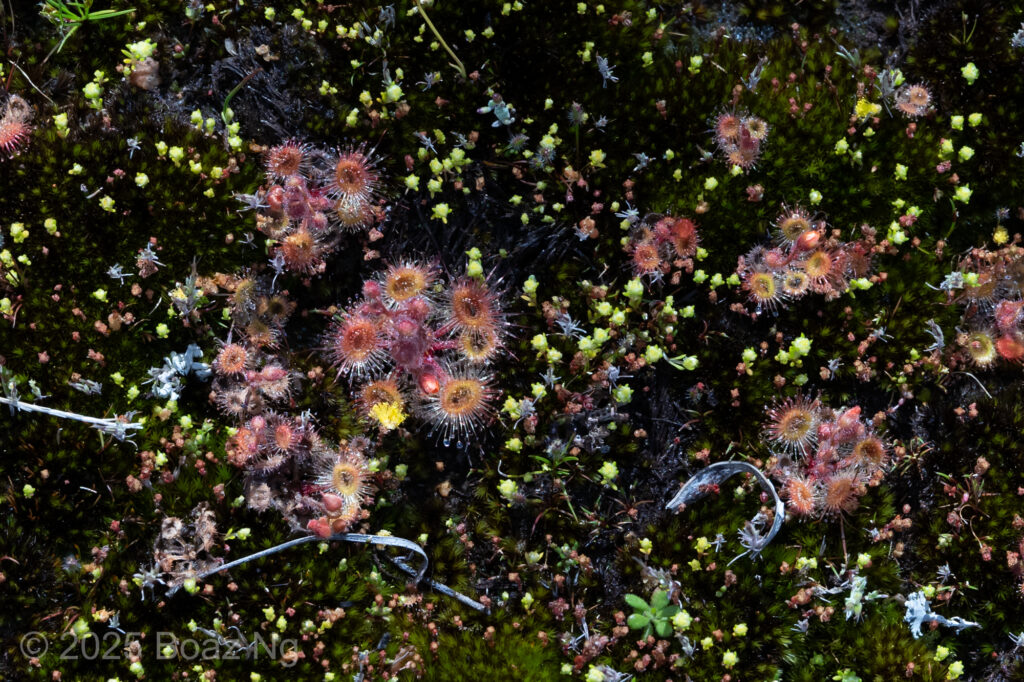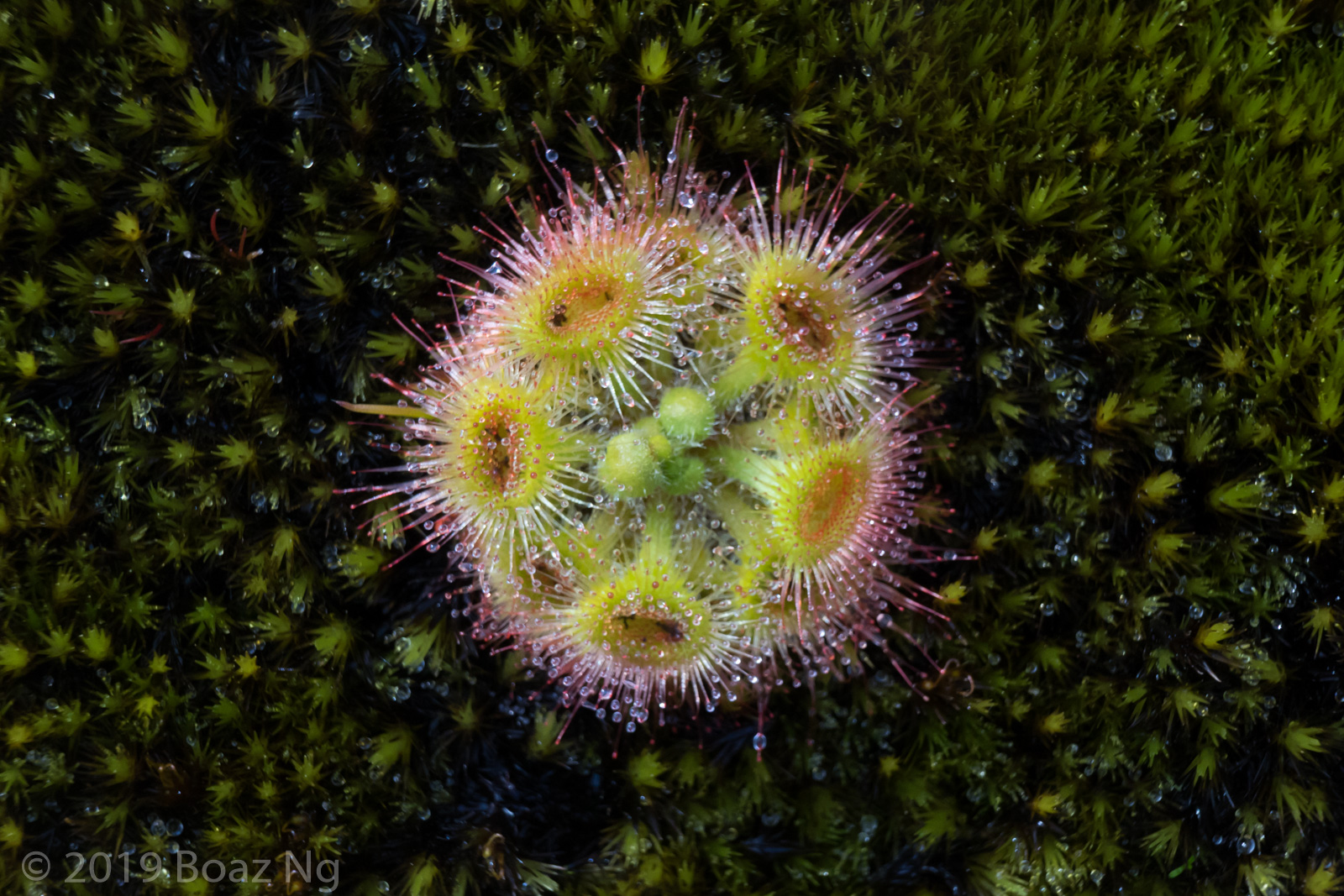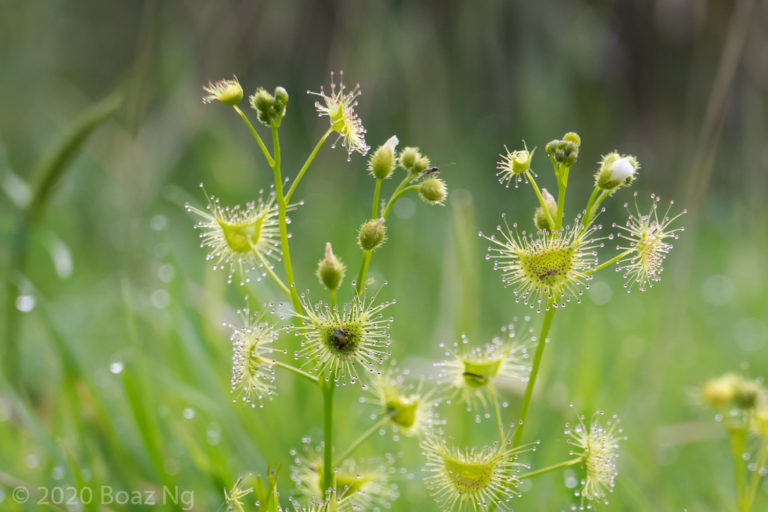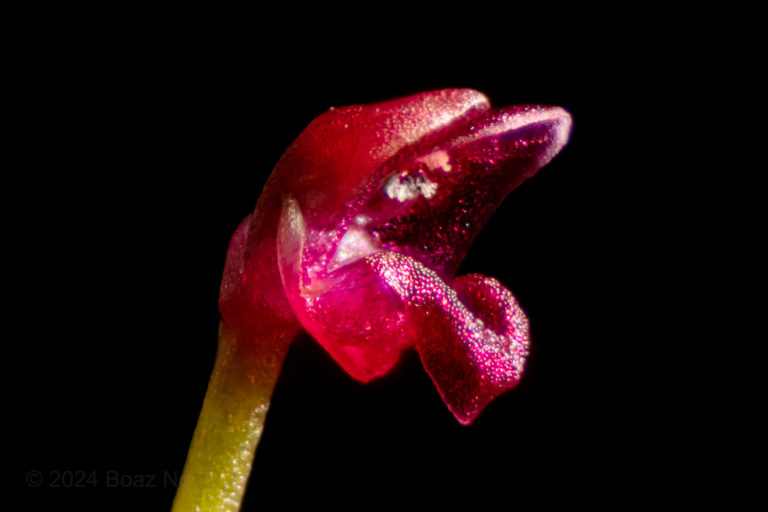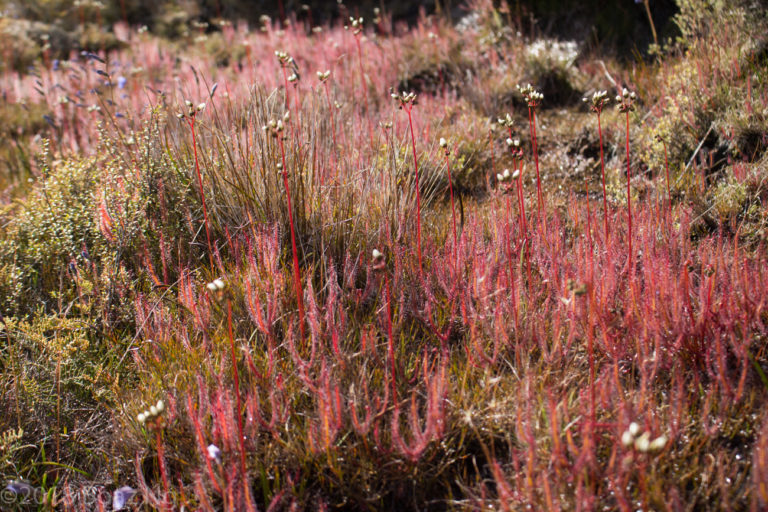Drosera glanduligera is a sundew endemic to the cooler areas of Australia. It is known for its long snap tentacles, which reflex quickly to catapault prey into its sticky leaves.
Drosera glanduligera is a small sundew, reaching around 2-3 cm in diamater. The petioles are short and hairy, and the laminae are expanded to an oval shape. The center of the leaves are deeply recessed into a pit. The leaves are fringed with long ‘snap tentacles’ which can snap inwards at a fraction of a second when touched. The flower stalks are highly glandular. The flowers are metallic orange.
The species is widspread across southern states of Australia, extending to the inland regions of SE QLD. It is associated with areas with cold winter climates with night temperatures that regularly drop to around 1-5 C. It is particularly common in SE Western Australia where it is probably the most common sundew. The species grows in a wide range of habitats but seems to be somewhat associated with shallow, full exposure niches such as mossy loam atop granite outcrops, gravelly fields and compacted clay.
Drosera glanduligera can be confused with Drosera burmannii where where the two species overlap in inland NSW and SE QLD. It ss distinguished by its green coloration and strongly pitted oval shaped lamina (as opposed to the wedge shaped leaves of D. burmannii). It is also superficially similar to the rosette phase of Drosera hookeri but can be identified by its long snap tentacles and densely hairy petioles.
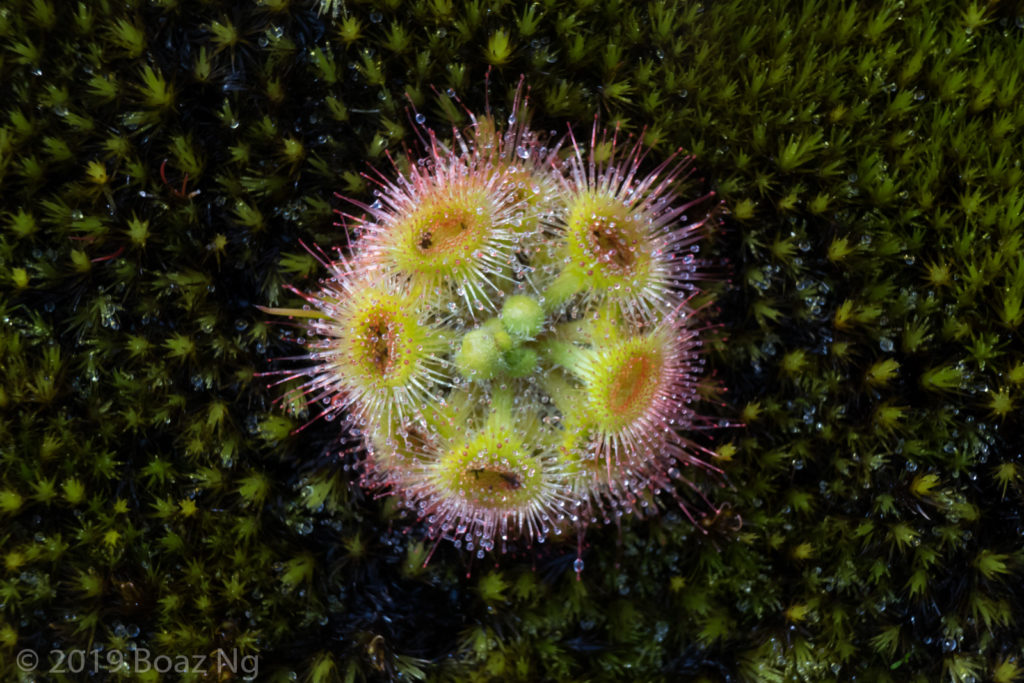

Drosera glanduligera growing in a mossy patch on a granite outcrop in the South West region of WA







